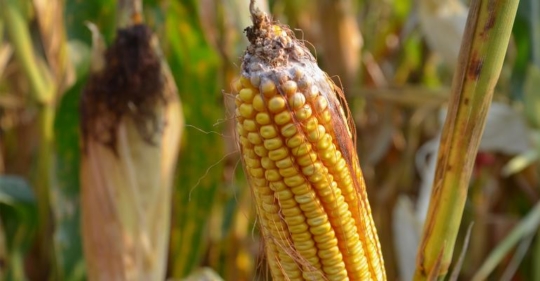Explore our blog featuring articles about farming and irrigation tips and tricks!
Surprise! Ear Rots And Molds Are Out There

By: Tom J Bechman
Walk through a cornfield before harvest, and if you look hard enough, you will likely find an ear affected by some sort of mold or ear rot. Fungi survive in the soil, and it’s not uncommon to find an ear here and there that’s infected. The real question is if it’s just a novelty, or if there is enough infection to signify a real problem.
So far this year, it’s too early to tell if ear rot will be a real problem, notes Dave Nanda, an independent crops consultant. He found an ear or two with rot while scouting recently, but most ears were still sound and unaffected.
Here are six possible ear rots and their symptoms. The information was supplied by the Purdue University Corn & Soybean Field Guide.
• Gibberella ear rot. A pink to red mold develops at the tip of the ear and progresses toward the base. Ears may appear reddish in later stages.
• Diplodia ear rot. The organism causing this disease usually forms a white to gray mold. It is more likely to begin at the base of the ear and move upward over time. If the whole ear is infected, it may be light in weight.
Stay up to date on all T-L news and get alerts on special pricing!


